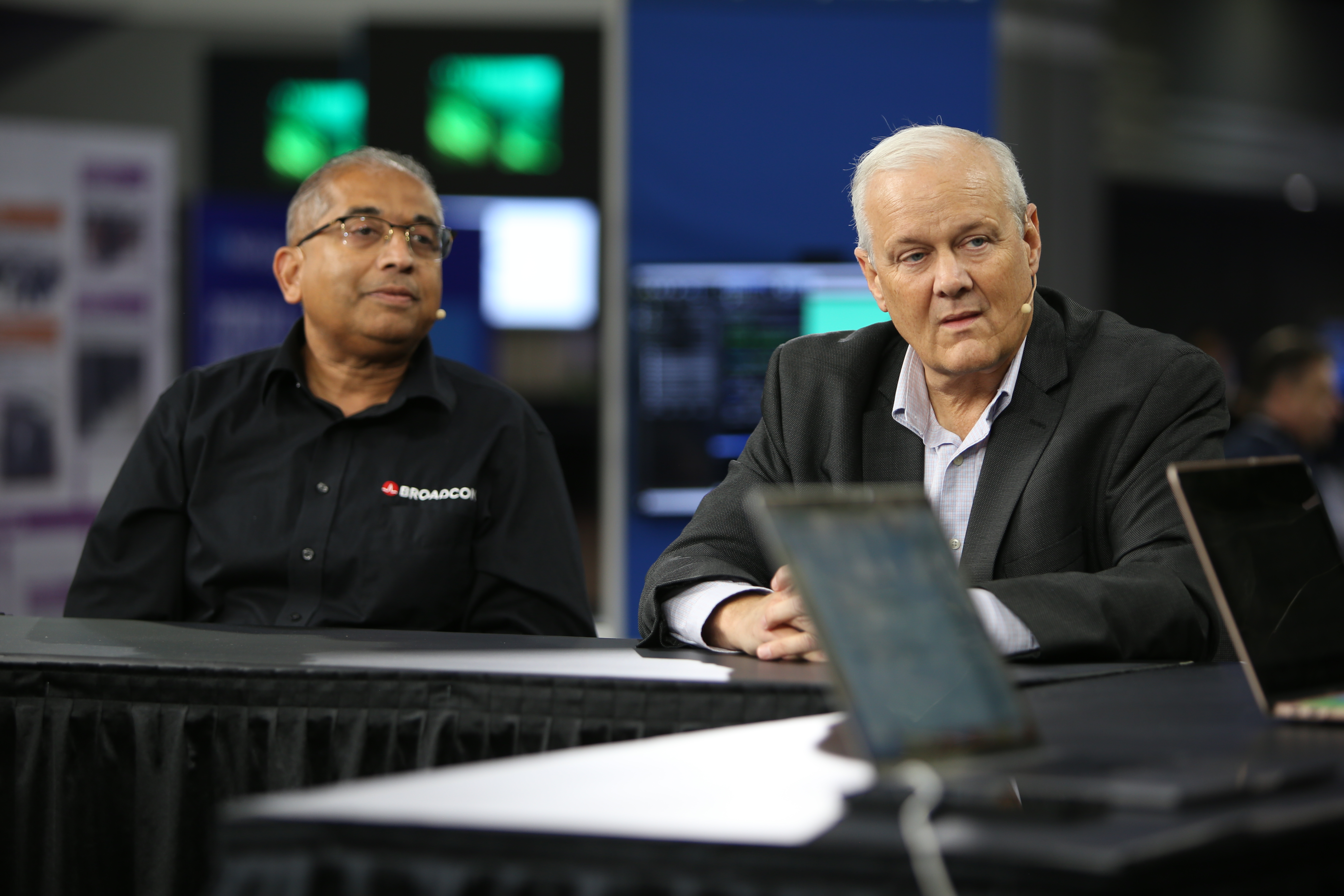 AI
AI
 AI
AI
 AI
AI
The high-performance computing industry is rapidly advancing to meet the demands of artificial intelligence and machine learning workloads. At SC24, there’s been a major focus on scalable AI networks and what comes next.
There have been plenty of developments on that front over the past year. It involved a focus on networking and how to build a big fabric given that AI and machine learning is all about scale, according to Hemal Shah (pictured, left), distinguished engineer and architect at Broadcom Inc.

Hemal Shah and James Wynia talk to theCUBE during SC24.
“Dell and Broadcom with our other partners, we are working to build really high bandwidth, high network utilized fabrics,” Shah said. “In partnership, what we’ll bring together is a lot of software integration, the whole diagnostic monitoring of the fabric, which makes life easy for deployments.”
Shah and James Wynia (pictured, left), director of product management networking, Enterprise Solutions Group, at Dell Technologies Inc., spoke with theCUBE Research’s John Furrier and Savannah Peterson at SC24, during an exclusive broadcast on theCUBE, SiliconANGLE Media’s livestreaming studio. They discussed scalable AI networks and the role of open standards in driving high-performance computing innovation. (* Disclosure below.)
Dell and Broadcom have been working together for some time and now have a validated design which is already public. The rapid pace of innovation has shifted timelines from years to mere months.
“It’s interesting. It felt like we all settled into, OK, this is what it takes to make an ASIC and to do a feature and to integrate and converge solutions,” Wynia said. “Then, when the opportunity came with the whole AI explosion, we realized we can do it a whole lot faster. Every single company that we’re working with is like, ‘You’re doing it how fast?’ That’s the way it’s working. These solutions, they’re quality solutions.”
Fabric management becomes a huge challenge for anybody who’s deploying this at scale, according to Shah. For that reason, it’s important to make things easy to deploy, monitor, and manage.
“You need to now have fabrics smart enough that they have built-in resiliency,” Shah said. “The transport, or reliability, is also built-in.”
In many cases, it’s not visible to end customers, because all they want to do is run their workload, according to Shah. Companies don’t want to worry about a link going down.
“These are the kind of intelligence, through software, we bring it in and then take that into account and make fabric deployment easy, and make fabric running all the time,” he said.
Looking ahead to next year’s SC25, these trends are expected to continue. There are some interesting developments on the horizon, according to Wynia.
“Next year this time, we will be talking a lot more about 1.6, where everything doubles, and we’ll certainly be talking about the buzz that gets generated as the UEC spec gets ratified and released,” he said. “And we start seeing progress when we start seeing announcements from our friends making silicon, as well as software on how to implement that.”
Next year, it will all be about scale, scale and scale, according to Shah. But there will be more to dive into as well.
“We should be able to talk about some of the enhancements we are doing at the solution, which are already in the works, but it’ll be more mature next year,” he said.
Here’s the complete video interview, part of SiliconANGLE’s and theCUBE Research’s coverage of SC24:
(* Disclosure: Dell Technologies Inc. sponsored this segment of theCUBE. Neither Dell nor other sponsors have editorial control over content on theCUBE or SiliconANGLE.)
Support our mission to keep content open and free by engaging with theCUBE community. Join theCUBE’s Alumni Trust Network, where technology leaders connect, share intelligence and create opportunities.
Founded by tech visionaries John Furrier and Dave Vellante, SiliconANGLE Media has built a dynamic ecosystem of industry-leading digital media brands that reach 15+ million elite tech professionals. Our new proprietary theCUBE AI Video Cloud is breaking ground in audience interaction, leveraging theCUBEai.com neural network to help technology companies make data-driven decisions and stay at the forefront of industry conversations.